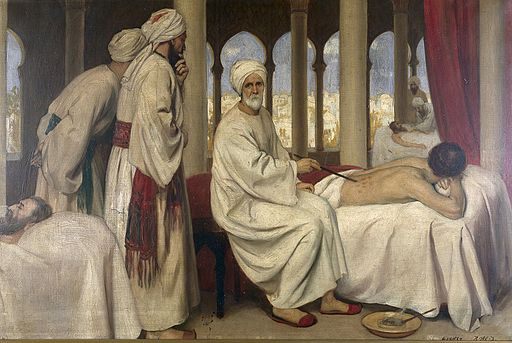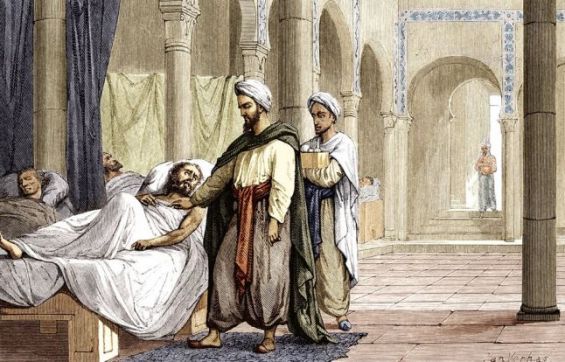Centuries ago, Morocco was making its first steps towards the creation of a health system. During the 12th century, the country started developing one of its earliest health facilities. History manuscripts and accounts suggest that the Kingdom’s interest in medicine was prominent during the Almohad Caliphate.
While previous dynasties witnessed practicing doctors, who used to visit the Palace and sick people at home, the Almohads excelled in establishing the right facilities for these professionals. During its reign over Morocco, the caliphate, which ruled over the Iberian peninsula also, built the country’s first bimaristans : a Persian word for medieval times hospitals.
The first of these facility’s was the Marrakech Bimaristan, introduced by Almohad ruler Yacoub El Mansour, recalls «Les hôpitaux de Marrakech : depuis le moyen âge jusqu'à l’ère contemporain». The inhabitants of Marrakech called the bimaristan Dar Al Fajar, which meant the house of appeasement.
The Marrakech Bimaristan
Manuscripts indicate that the bimaristan was located between the Koutoubia mosque and the Al Mansour mosque. The exact date of its construction remains a mystery but historians believe that it was built during the reign of Caliph Al Mansour, which extended between 1184 and 1199.

Moroccan historian Abd al-Wahid al-Marrakushi, who lived during the Almohad period, described the bimaristan as an «architectural jewel». According to him, Dar Al Faraj, had «four basins, one of which was in white marble» and had running water, flowers and plants planted following the orders of the Caliph.
The facility was well supplied by the Sultan. It included hot and cold water, baths, kitchens, laundry rooms and rooms for men and women. The hospital was not just a building for the sick, but a well-decorated facility, with a rather artistic side as well.
«Architects, masons and craftsmen have worked hard to make this hospital an architectural gem», al-Marrakushi explained. Multiple engravings, picturesque sculptures and precious fabrics such as wool, linen and silk were made and invested to decorate the bimaristan.
A well-managed health facility
And as any modern health institution, Dar Al Faraj had a competent staff and a managing team. For the bimaristan, only skilled doctors were chosen to run it, including Al Mansour’s private doctor Abou Ihsak Addani and his two sons.
«A big multidisciplinary team worked under his command : the medical and nursing staff, pharmacists, the staff in charge of management and financing, the cooks, the staff responsible for laundry, gardeners and housekeepers», the same research recalled.

Dar Al Faraj was considered a public establishment, managed and subsidized by the Makhzen. Al Mansour allocated thirty dinars a day for the facility.
In addition to its medical mission, the bimaristan was an academic and social hub for the city and the Kingdom. «The hospital treated mental illnesses and served a pharmacological center where drugs were manufactured», the same source added. Dar Al Faraj also attracted academics and researchers and provided medical tuition.
It is believed that the Marrakech bimaristan paved the way for the creation of similar facilities in the Kingdom and continued treating patients even after the fall of the Almohad dynasty.





 chargement...
chargement...











